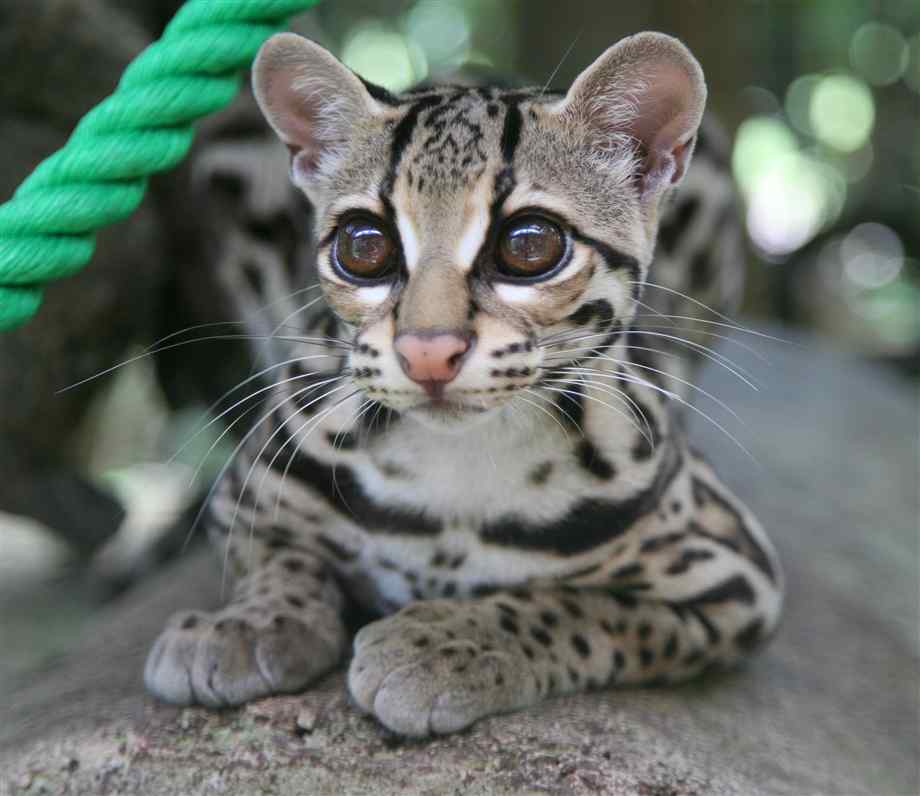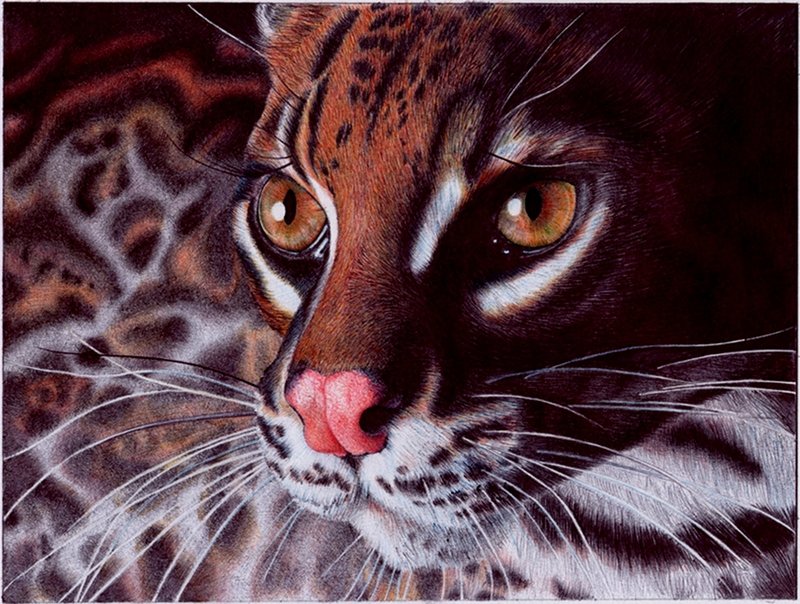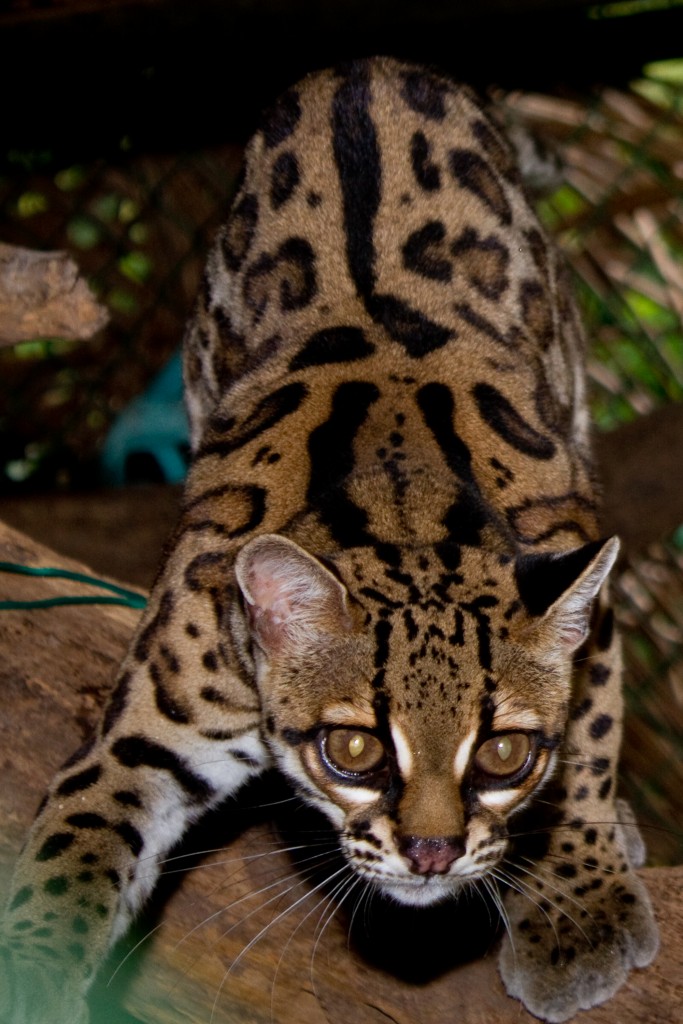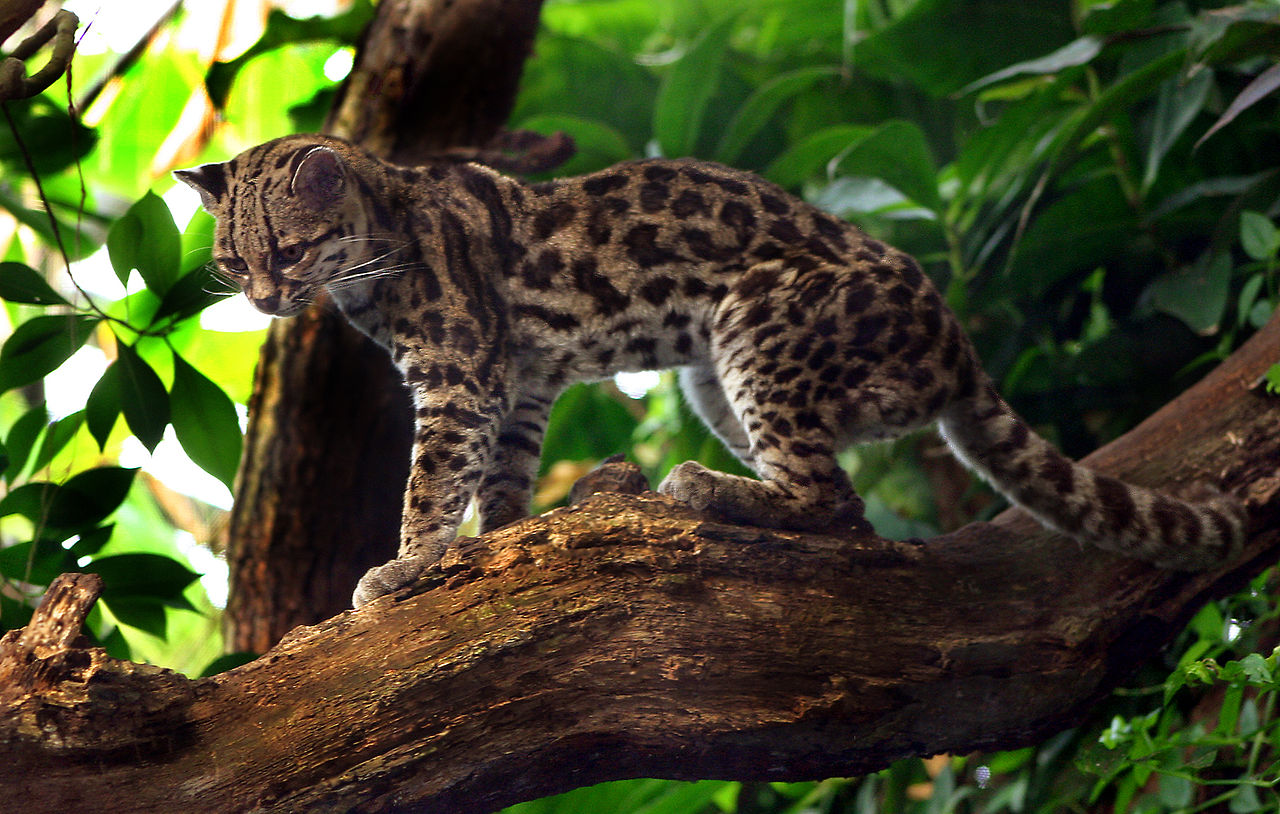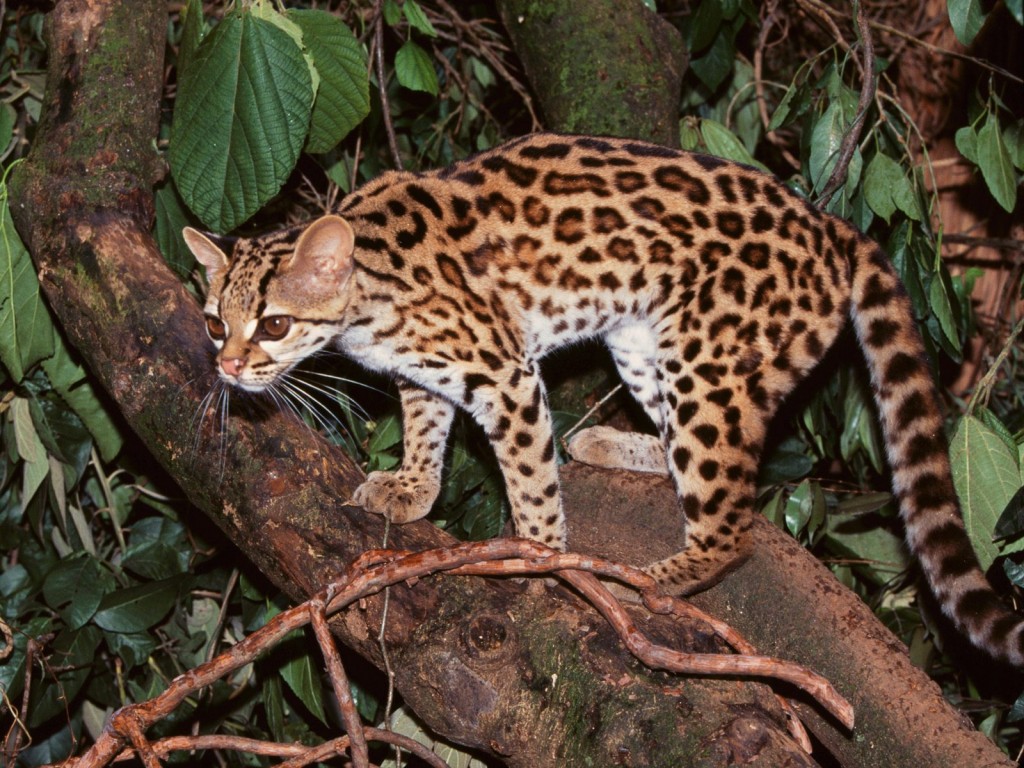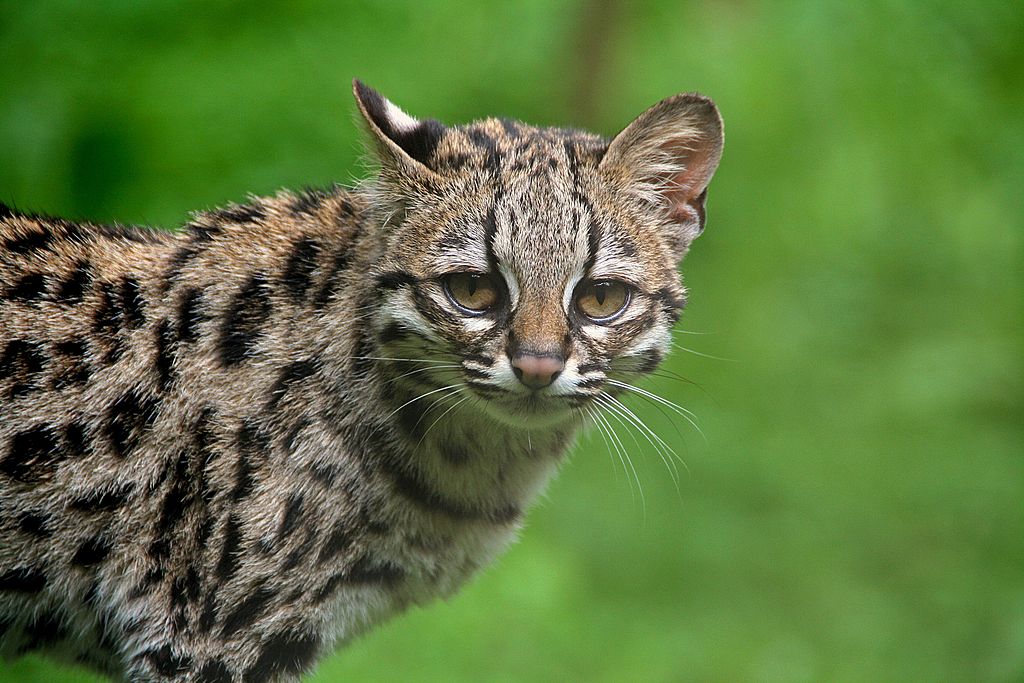Wild Cats Series: The Margay
The beautiful margay (Leopardus wiedii) lives in dense forests from Argentina to Mexico; unsurprisingly, the margay is on the “near threatened” list.
The margay has a tough time due to loss of habitat and, unfortunately for them, its coat is irresistible to some people idiots. Around 18,000 are killed each year to be made into rugs or whatever. Good one, people idiots.
Margay are similar in appearance to the ocelot (Leopardus pardalis), but have bigger eyes for use during their predominantly nocturnal hunts. They also sport longer legs and tail (up to 70% of its body length) to aid them in their arboreal lifestyle.
Margay catch most of their prey at night and in the trees, they’ve even been observed chasing squirrels through the branches, so they’re clearly some very nimble kitties.
Of all known cat species, only the margay and the clouded leopard have flexible enough ankles to enable them to climb down tree trunks face first. They can grasp branches with their back feet just as well as their front feet, and their legs rotate a full 180°. Margay have even been observed hanging from a tree branch by one paw. They’re more primate than cat.
The margay are around 50 cm long and weigh 2.5-4 kg; amazingly, they can jump 12 feet horizontally. On the nipples front, female margays only have two teats, which is pretty rare in cats.
The margay is the first neotropical predator to have been observed mimicking its prey. A group of researchers in Brazil in 2005 heard a margay imitate the sound of a baby tamarin monkey from his hideout spot in a bush. ALthough the researchers referred to the call as a “poor imitation,” the sentinel tamarin was intrigued enough to leave his post and investigate further. In fact, the sentinel was so convinced that he called in some more of his buddies.
A total of five tamarins went to investigate the strange sound from the undergrowth. When the margay broke cover, the tamarin raised the alarm and made good their escape. So the margay was unsuccessful, but what a cunning, wily cat.
Jungle dwelling folk have reported margays using this kind of trickery for years, and similarly by jaguars and pumas. This visual evidence of the technique being used corroborates the indigenous population’s stories, so it could well be that this is a whole new area of feline behaviour to study.
The Margay is increasingly rare; it has been hunted for its skin and, of course, deforestation is playing its part. Margay are solitary, only meeting their sparsley distributed bretherin to mate. They generally only produce one kitten every couple of years, and their infantc have a 50% mortality rate. None of this will help them overcome the onslaught of the human.
As with most of the wild cats I have written about over the last few months, their days appear to be numbered and there is only one species to blame.
MORE:
WILD CATS PT3: SUNDA CLOUDED LEOPARD

